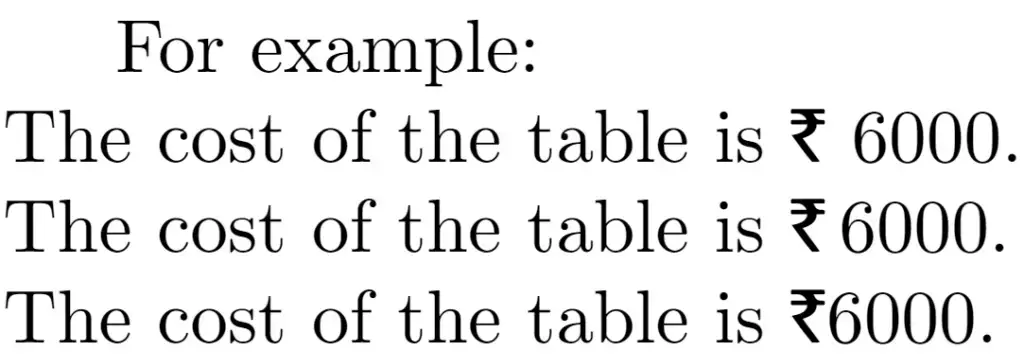Are you a LaTeX user looking to incorporate the Indian Rupee (₹) symbol into your documents? Incorporating this symbol in LaTeX may not be as easy as with other symbols. In this blog post, we’ll explore the tfrupee package available to integrate the Indian Rupee symbol into your LaTeX documents seamlessly.
Using the ‘tfrupee’ package
It is the most widely used and easiest method. First of all, install the tfrupee package available on the CTAN website. After the installation, add the tfrupee package to your document preamble, as shown below.
\usepackage{tfrupee}Now, you can use the command \rupee to insert the rupee symbol. Here’s an example:
\documentclass{article}
\usepackage{tfrupee}
\begin{document}
The cost of the table is \rupee 6000.
\end{document}Output

Note: You can adjust the spacing around the rupee symbol using a thin space (\thinspace). For example:
\documentclass{article}
\usepackage{tfrupee}
\begin{document}
The cost of the table is \rupee\thinspace 6000.
\end{document}Output

Note: Sometimes, the rupee symbol is shown on the first line, and its amount is shown on the second line. If you don’t want to break the rupee symbol and an amount, you can use ∼, \, and \nolinebreak commands. Using any one of the commands ( ∼, \, and \nolinebreak) provides an unbreakable space between the rupee symbol and an amount. You can read our detailed guide on how to prevent line breaks in LaTeX. For example:
\documentclass{article}
\usepackage{tfrupee}
\begin{document}
For example:\\
The cost of the table is \rupee~6000.\\
The cost of the table is \rupee\,6000.\\
The cost of the table is \rupee\nolinebreak6000.\\
\end{document}Output

